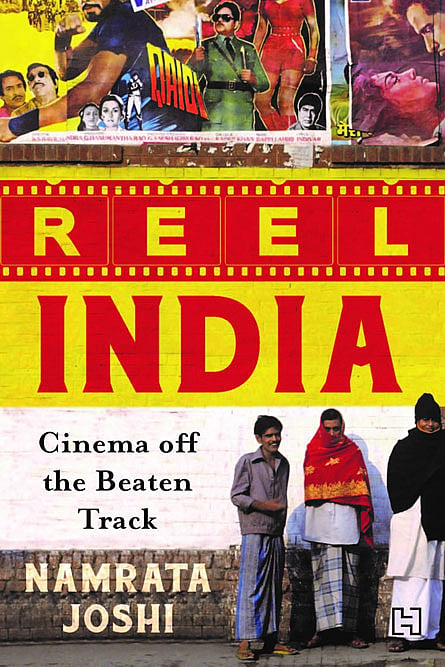Cinemas of Resistance

A game of chess cannot be scripted—there are a few million outcomes that depend on the individual moves of two players. A crowd-funded film with a few hundred people writing the script and dialogue, taking turns as directors, cinematographers and actors, and even contributing to the music feels like an endgame that should have quickly spiralled out of control. But Turup (Checkmate), captivated film festival audiences in 2017 with its intertwined stories of three women shaping their own realities in the backdrop of their quotidian lives. Reel India: Cinema of the Beaten Track by Namrata Joshi tells a compelling story of how Bhopal-based Ektara Collective produced Turup within homes and working class neighbourhoods of its’ contributors, with a community that came together to cooperatively make a film they all had a part in, if not as directors then as financiers or extras milling around the frame.
The varied stories of cinema in India have tentatively remained around Bombay and Bollywood owing both to popular imagination as well as the centrality of its production and distribution networks. Joshi seeks to revisit filmmakers and their films, non-studio spaces where films are made, the thrall of audiences and their cinema hall, and the continued vivid representation of films in the ‘mofussil’, ‘small towns’, ‘peripheries’ and the ‘provincial’ regions of India. In this collection of thoroughly researched essays, Joshi visits century-old cinema halls in Madurai, homes that double up as memorabilia museums in Madhya Pradesh, chronicles how an entire villages transforms into a set for a film, and tracks down the last of the touring talkies—35mm film projectors taken around on trucks that screen a double bill till 2 a.m. in villages where 80-year-olds have never seen a film before. Joshi has attempted a detailed, exhaustive catalogue of non-mainstream cinema in India that serves as a rich record of non-mainstream cinema.
2026 New Year Issue
Essays by Shashi Tharoor, Sumana Roy, Ram Madhav, Swapan Dasgupta, Carlo Pizzati, Manjari Chaturvedi, TCA Raghavan, Vinita Dawra Nangia, Rami Niranjan Desai, Shylashri Shankar, Roderick Matthews, Suvir Saran
The heart of the book lies in its detailed chapters that feature animated stories and sensitive interviews with filmmakers from parts of the country and from communities that rarely make the cut in mainstream cinema and seldom have its reach. Joshi spends time unravelling the popular, yet struggling industry of ‘Mollywood’ in Malegaon, where a poor Muslim community engages with communal harmony, morality and an uncertain future through spoofs such as Malegaon ka Superman and Chintu Ban Gaya Gentleman. In Ahmedabad and Ulhasnagar a handful of Sindhi filmmakers cater stories of nostalgia to a community that barely accounts for a point on India’s linguistic map. Garhwali films are chronicled alongside languages and dialects such as Tulu, Bhili, and Badaga. Joshi tracks down graduates from Film and Television Institute of India (FTII) and Satyajit Ray Film and Television Institute (SRFTI) who have gone back to tribal and rural communities in Jharkhand, Chhattisgarh and Odisha and are producing films in Santhali, Kurukh and Sadri with local talent. These interviews tell of lost stories, memories, languages and cultures within communities besieged by social and political distress, similar to interviews from Kashmir where cinema halls that closed during the years of militancy have now transformed into bunkers and ruins.
The striking portrait of the singer Rekha Jha (O Womaniya from Gangs of Wasseypur) tells us of a talent caught between home, family and a daunting industry. Joshi listens in on college girls in Haryana discussing sexuality after watching a foreign language film at a local festival. Despite these portraits and snippets, there are very few women filmmakers or viewers whose experiences are chronicled in the book.
The book’s subtitle ‘off the beaten track’ combined with its kitschy cover makes one a little weary. Despite getting into the heart of the country, the author returns to cities such as Bhopal, Jaipur, Lucknow, Jodhpur and Indore, denizens of whom would cringe at being referred to as ‘provincial’ or ‘small-towns’. Interestingly, Joshi is prescient in a chapter that looks at the way Bollywood is moving away from Bombay and Delhi in its attempt to capture language, cultures, families and their realities in Tier-2 cities and towns.
Even within its scanty narratives from the Southern states, Joshi sticks to large cities such as Coimbatore. While the new wave of ‘Cinema Madurai’ has been beautifully contextualised in its hyperlocal by-lanes and alleys, and the author revisits memories of Sholay in Ramanagara in Karnataka, narratives from Telangana, Andhra Pradesh, Tamil Nadu and Kerala are starkly missing in the book.
The strength of the book however lies more in people rather than the places that cinema occupies. The book weaves stories of fans who have turned their homes into shrines for their actors and singers, those who write in post-cards daily to radio stations, of mavericks who purchased film projecting equipment from departing Frenchmen in colonial India, and of those who burn DVDs of their low-budget films to send to a diaspora audience in Canada. The deep faith in cinema by its makers and viewers is captured by the book in its accounts of talented filmmakers who return home to make cinema in places which have little equipment and no studios, of small screening halls that run despite losses merely to get people together, and of communities that put some of their savings and all of their talent into making Turup and other cinemas of resistance.

